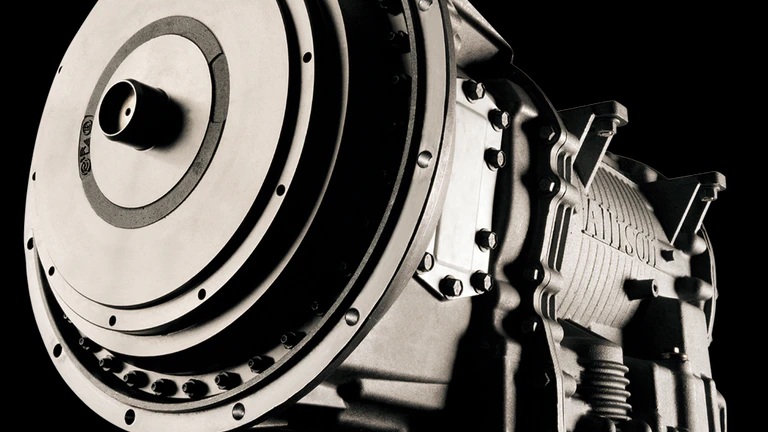According to Branden Harbin, managing director of global marketing for Allison Transmission, many linehaul fleets have decided an AMT is “good enough” at helping them meet their objective, which is to migrate away from a manual transmission that is easier on both drivers and technicians. As linehaul fleets wait to see where the trend toward full electrification goes, they are hesitant to make the broader leap to fully automatic transmissions. Allison is a manufacturer of automatic transmissions for medium and heavy duty commercial vehicles.
Dave Genise, director of engineering for Eaton Vehicle Group North America, agrees with that assertion.
“Electric buses and trucks must perform their intended functions in the same way as the diesel counterparts,” Genise says. “This means being fully able to start on grades and maintain highway speed on hills when they are fully loaded. The design strategy used by early adopters in the commercial vehicle space for these large, heavy vehicles has been to use direct drive. While a simple approach, these motors are excessively large and heavy, and still cannot perform to the same level as the diesel trucks and buses.
“Eaton solves this challenge by expanding the range of the electric motor by adding an AMT specifically designed for electric vehicle use,” Genise continues. “The lower gears are used to multiply the motor torque without adding a larger motor, and in most cases, actually using a smaller, less costly motor. Torque multiplication in low gears allows the vehicle to start fully loaded on grades without compromise. The higher gears are used to place the electric motor in its most efficient operating speed while at highway speeds, thereby extending vehicle range.”
An AMT intended for use in an electric commercial vehicle has a few differences from a diesel AMT. The EV transmission will have fewer gears overall since the instant torque response available in the electric motor allows for larger step sizes and less overall ratio spread.
“There is also no clutch in the system,” Genise points out. “The electric motor is controllable from zero rpm and is directly connected to the AMT input. Shift synchronization is accomplished through precise motor speed control with no need to open and close a clutch. The result is extremely fast shift times with nearly imperceptible torque gap.”
Fully automatics appeal to certain segments
As the linehaul segment generally settles on an AMT, Allison’s Harbin says a fully automatic transmission can provide additional benefits that may resonate with certain fleets.
Class 8 vocational trucks such as dump trucks and concrete mixers have already moved toward fully automatic transmissions. “These types of trucks were dominated by manual transmissions for years, but this is where we’ve seen a lot of our gains over the past five years,” Harbin says. “This segment has bypassed right over the AMT and gone straight to a fully automatic.”
There are three reasons why. The biggest one is reduced maintenance. “With an Allison transmission, you leverage the torque converter every time you go to launch as opposed to a starting clutch,” Harbin explains. “A torque converter is not a wear item that needs to be replaced. By comparison, an AMT leverages a starting clutch to get the truck moving.”
As Harbin reminds, clutch replacements can be costly. That is why some vocational trucks have opted to bypass an AMT.
“With something like a concrete mixer that is highly utilized, a fleet could see a couple clutch replacements over the life of the truck,” Harbin says. “Each replacement takes the truck out of service for two or three days. The fleet can’t afford that.”
Beyond Class 8 vocational trucks, Harbin says there are other Class 8 segments starting to show interest in fully automatic transmissions.
“When you look at the regional haul segment, particularly pickup and distribution fleets like PepsiCo and Frito-Lay, our market share skyrockets,” Harbin relates. “These fleets see the value proposition of a fully automatic transmission. These fleets must run at a higher start/stop duty cycle, like in cities where they need better maneuverability and faster launches to clear intersections. At night, these fleets might operate like more of a linehaul route. Here they don’t necessarily need that torque converter, but still appreciate the fact that they don’t have to worry about clutch replacements.”
For fleets of all types, reduced maintenance is an important benefit. Then it’s about matching the right performance, cost, and ROI for the specific application at hand.
Source: https://www.fleetmaintenance.com
CUT COTS OF THE FLEET WITH OUR AUDIT PROGRAM
The audit is a key tool to know the overall status and provide the analysis, the assessment, the advice, the suggestions and the actions to take in order to cut costs and increase the efficiency and efficacy of the fleet. We propose the following fleet management audit.




